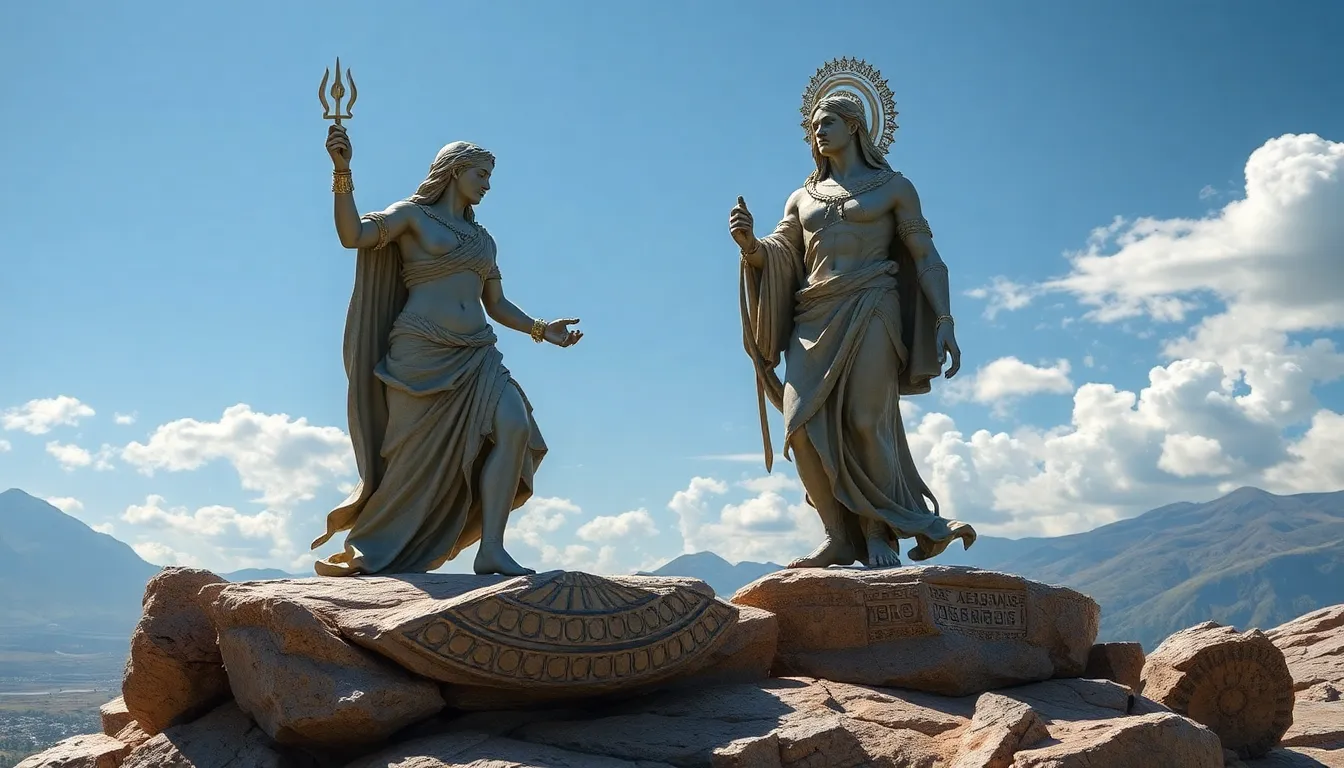The Role of Fate in Pandora’s Story: A Mythological Perspective
I. Introduction
Pandora’s myth is one of the most intriguing tales from Greek mythology, encapsulating themes of curiosity, consequence, and the duality of hope and despair. As the first woman created by the gods, Pandora’s story is not only about her creation but also about the profound implications of her actions and their consequences on humanity. Central to this narrative is the concept of fate, which plays a crucial role in shaping the events that unfold. This article aims to explore the intricate relationship between fate and Pandora’s story, shedding light on its significance in the broader context of Greek mythology.
II. The Origins of Pandora: A Gift and a Curse
Pandora was crafted by the gods as a response to Prometheus’s theft of fire, which he gave to humanity. Each god contributed to her creation by bestowing unique gifts, making her both beautiful and endowed with various traits that would ultimately lead to her infamous actions.
The name “Pandora” itself translates to “all-giving,” reflecting her nature as a gift to mankind. However, this gift bore a curse, as she was also given curiosity—a trait that would drive her to open the infamous box, unleashing chaos upon the world.
Pandora’s emergence occurs in a pivotal moment in Greek mythology, symbolizing the transition from a state of innocence to one of experience, where knowledge comes with consequences. Her creation is a reflection of the gods’ complex nature, illustrating how gifts can also carry hidden dangers.
III. Understanding Fate in Greek Mythology
In ancient Greek beliefs, fate, or “Moira,” refers to the predetermined course of events that is beyond human control. The Moirai, or Fates, were three goddesses—Clotho, Lachesis, and Atropos—who spun, measured, and cut the thread of life, determining the destiny of every individual.
- Clotho: The spinner, who created the thread of life.
- Lachesis: The measurer, who determined the length of life.
- Atropos: The cutter, who chose the moment of death.
The interplay between fate and free will is a recurring theme in Greek mythology. While individuals have the capacity to make choices, their fates are often seen as predetermined, leading to a complex relationship between divine will and human action.
IV. Pandora’s Box: The Symbolism of Hope and Despair
Pandora’s box, which she was instructed not to open, contained all the evils of the world—disease, sorrow, and despair. Once she opened it out of curiosity, these afflictions were released, spreading chaos among humanity.
However, within the box also lay hope, a duality that reflects the complexity of human existence. Hope serves as a counterbalance to despair, suggesting that even in the darkest times, there is a glimmer of light that can guide individuals through their struggles.
The metaphor of the “box” can be interpreted in various ways:
- As a representation of human curiosity and the consequences of knowledge.
- As a symbol of the inevitable suffering that accompanies life.
- As a reminder of the importance of hope in the face of adversity.
V. The Consequences of Pandora’s Actions
Pandora’s act of opening the box unleashed evils that forever changed the human condition. These events reflect the concept of predestined fate, as they illustrate how one action can have far-reaching consequences for all of humanity.
The release of evils symbolizes the fragility of human existence and the unpredictability of life. It emphasizes that while fate may predetermine certain events, the manner in which individuals respond to these events can shape their experiences.
The divine intervention in Pandora’s story also raises questions about the role of the gods in human affairs. Are they mere orchestrators of fate, or do they also bear responsibility for the consequences of their creations?
VI. The Philosophical Debate: Fate vs. Free Will
Pandora’s story invites a deeper examination of the philosophical perspectives surrounding fate. The tension between divine control and human agency is central to the narrative, as Pandora’s curiosity leads to significant consequences.
Various philosophical viewpoints arise from this tale:
- Determinism: The belief that all events, including moral choices, are determined completely by previously existing causes.
- Libertarianism: The belief in free will, suggesting that individuals have the capacity to make choices independent of fate.
- Compatibilism: The idea that free will and determinism are not mutually exclusive, allowing for personal responsibility within a framework of predetermined fate.
The implications of these perspectives extend to personal responsibility, challenging individuals to reflect on the nature of their choices and the extent to which they are influenced by external factors.
VII. Modern Interpretations and Relevance
Pandora’s myth continues to resonate in contemporary culture, often adapted in literature, art, and media. The themes of curiosity, consequence, and the nature of hope are explored in various forms, highlighting the enduring relevance of the story.
The ongoing discourse around fate is evident in modern narratives, where characters grapple with their destinies and the impact of their choices. Pandora’s tale serves as a reminder that while fate may be predetermined, the journey through life is shaped by how one responds to the challenges they face.
Lessons from Pandora’s story remain pertinent today, encouraging individuals to embrace hope despite adversity and to consider the implications of their actions in a world filled with uncertainty.
VIII. Conclusion
In conclusion, the role of fate in Pandora’s narrative is multifaceted, intertwining themes of divine intervention, human agency, and the complexities of existence. Pandora’s story exemplifies how fate can dictate the course of events while simultaneously allowing for personal choices that reflect individual character.
As we reflect on the implications of fate in mythology, it is essential to consider our interpretations of personal agency and responsibility. The tale of Pandora serves not only as a cautionary story but also as an exploration of hope, illustrating the delicate balance between despair and the possibility of redemption.




